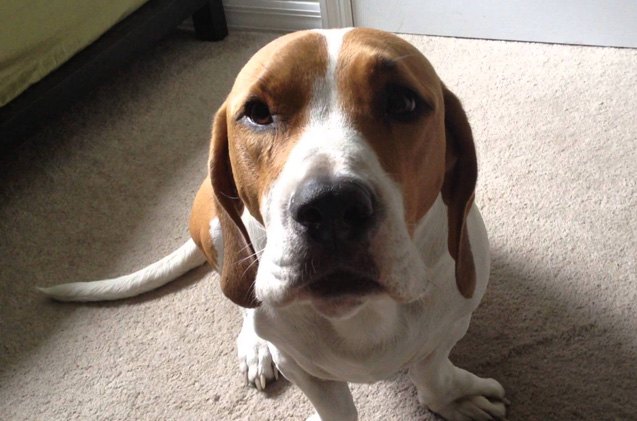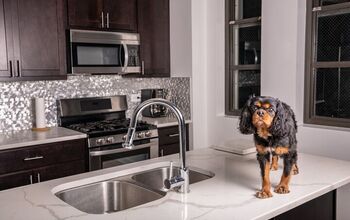Bully Basset


About Bully Basset
If you’re searching for a dog who will get along with just about everyone he meets, the Bully Basset will not disappoint. These friendly dogs are also loyal and loving, but they can be a bit of challenge when it comes to training.
Check out the information below to learn more about this unique hybrid canine breed. Once you know more about these good looking dogs, you can decide whether or not they would be the right fit for your family.
The Bully Basset is loyal and loving, and gets along with everyone he meets.
The Bully Basset is a designer crossbreed whose origins aren’t entirely clear.
The Bully Basset is a cross between a purebred Basset Hound and Bulldog.
To give your dog the nutrition that he needs, choose a high quality dog food that contains natural ingredients.
Because the Bully Basset is a larger dog, he will need a greater amount of food each day to sustain his energy. A good place to start is feeding your dog anywhere from 2½ to 3 cups of dry canine food each day, but split this up into a couple of meals per day.
If you want to also feed your dog a canned canine diet, just adjust the amount of dry food that you provide so that your dog doesn’t end up eating too much and gaining too much weight.
Bully Bassets are social, loyal, and affectionate canines that thoroughly enjoy meeting new people.
The Bully Basset could be a little challenging to train, so get ready to be patient, positive, and consistent in your approach. With the right training routine, you can overcome this breed’s stubbornness, as well as teach your dog not to chew on anything except his toys.
If you want to have a companion that will be easy to train, the Bully Basset probably isn’t your best match. These dogs don’t typically train quickly, so you will need to commit a lot of your time to the process.
Bully Bassets are best for experienced dog owners instead of first-time owners. You will need to know how to always stay calm and patient, and you will need to use positive training techniques that include plenty of rewards, praise, and treats in order to encourage your pooch and keep him motivated. The earlier in your dog’s life that you can start training and socializing him, the better.
A medium to large-sized breed, the Bully Basset weighs between 40 and 65 pounds.
Bully Bassets are social, loyal, and affectionate canines that thoroughly enjoy meeting new people. They will give anyone their friendship, and they love playing and having a good time.
These dogs are fearless and entertaining, but when they are ready to relax and regain their energy, they will also happily snuggle up to you and sleep next to you.
Because the Bully Basset is a hybrid canine breed, there is the possibility that he will inherit some of the health problems that most commonly affect its parent breeds. However, hybrid breeds have also been found to be hardy and healthy, and there is no guarantee that your dog will ever encounter any of the problems of its parent breeds. Knowing what conditions to keep an eye out for, and having your dog regularly examined by a vet, will help you pinpoint ailments in their early stages.
The conditions that commonly affect the Basset Hound and Bulldog include Von Willebrand’s disease, eye conditions, reverse sneezing, hip dysplasia, tail ailments, obesity, allergies, ear infections, skin problems, head shakes, bloat, patellar luxation, panosteitis, thrombopathia, brachycephalic syndrome, and intervertebral disc disease.
The Bully Basset has an average lifespan of 8 to 12 years.
You should expect that your Bully Basset will be a pretty active pooch, so you will need to dedicate some time each day to letting your dog get his exercise. This will allow him to release his energy and remain happy and at a healthy weight.
A good exercise routine can include a couple of daily walks, along with time running around in your enclosed and safe backyard. You can also take him to the dog park, and you can use toys to play with your dog outside.
Short to moderate bursts of energy are typical for these dogs, who don’t have a high level of endurance, so a brief jog or walk is better than a long hike.
The Bully Basset could be a little challenging to train, so get ready to be patient, positive, and consistent in your approach.
The Bully Basset is not recognized by the American Kennel Club, as it is considered to be a hybrid breed. However, this breed is recognized by the American Canine Hybrid Club (ACHC), the Designer Dogs Kennel Club (DDKC), the Dog Registry of America, Inc. (DRA), and the International Designer Canine Registry (IDCR).
Your Bully Basset will have a straight and short, but dense, coat. He will need a moderate level of grooming, and he will shed moderately to frequently. Expect to vacuum up dog hair often after you introduce this furry friend into your home.
To keep shedding under control and to keep your dog looking his best, brush him daily. Use a gentle canine shampoo to bathe him whenever he gets too dirty.
Bully Basset puppies should be handled with care, just as you would handle any other breed. Also be sure to teach your children to be careful with your puppy so he doesn’t get hurt.
With proper socialization, puppies will grow accustomed to being around children and other pets, and these outgoing dogs will quickly become friends with everyone they meet.
Photo credit: Lovelee Puppies

Lisa Selvaggio is a freelance writer and editor, and our resident cats-pert, with certifications in pet nutrition and pet first aid. She enjoys producing content that helps people understand animals better so they can give their pets a safe and happy home.
More by Lisa Selvaggio

























